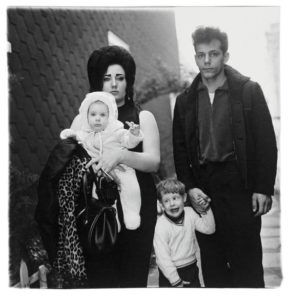So, I understand that semiotics is defined as ‘everything that can be taken as a sign’ (Eco, 1976: 7) and I understand it has what sometimes appears to be a complex set of characteristics. But frankly, I am confused about what it actually is. Is it a discipline, is it an epistemology, is it a methodology, is it a collection of methods, is it a philosophy or is it some sort of cultural studies cult?
I accept this may be as a result of my own ignorance, I may not have read the right books or papers, it is certainly possible I have not read enough of them but trying to fathom this out is not proving easy. It seems to sit within a social constructionist and interpretative paradigm but while some authors surface this others do not. I think this is partly why I felt such frustration in reading Jobey’s account of ‘Young Brooklyn Family.’
I have been trying to find critiques of semiotics and a few have surfaced but they seem to be far from the norm. Given my personality type (as explored in assignment three) it is perhaps little surprise that I was becoming increasingly sceptical about the apparent lack of a counter-narrative to semiotics, or at least some debate of its shortcomings. Although some semiotic analysts do refer to interpretation and some also acknowledge wider contextual factors not all do as I found with Jobey. It is hard sometimes to distinguish interpretations from those presented as fact.
As someone who has been involved with ethnographic research I am familiar with positivistic arguments being made against interpretative methodologies as well as having to be clear about the criteria against which the research can be judged. I have seen very little of this in the texts I have read so far around semiotics. That is not to suggest they are not there, it may just be that I have not encountered them to date.
I was pleased to find one paper that does offer a critique in a way that is coherent, comprehensible and resonated with my experience. Chandler (2002) offers various criticisms, in summary:
- The boundaries of semiotics seem to be ever expanding and have become so fluid it can now encompass almost every academic discipline – what Chandler refers to as the ‘imperialism’ of semiotics
- Semioticians are not always explicit about the limitations of their techniques
- There is an absence of transparency in the analysis of signs, implying they are objective realities rather than subjective interpretations
- Some analyses appear to have a preoccupation with classification which has a tendency to ‘downplay the affective domain’ and in doing so moves away from the subjective creating the illusion of objectivity
- Structural semiotics is only concerned with textual structure and in doing so negates the wider cultural context in which the text sits. In not taking account of the cultural context the impact of power structures, hierarchies and wider social constructs are ignored. As Chandler (2002) notes ‘the relationships between signifiers and their signified may be ontologically arbitrary but they are not socially arbitrary.’
- There is a concern that much of semiotics has become associated with a simple process of ‘decoding’. For me this has an ontological implication in that it suggests there is a single reality or truth to be uncovered if you know how to read the signs correctly
Semioticians have recognised some of these shortcomings and Chandler (2002) goes on to describe the ‘turn’ to the social and post-structuralism, which has an equal concern with both structure and process.
I am pleased I took time to think about this further and it has helped reassure me that it is not necessarily something I am missing, this is in fact a complex and contested field. In terms of responding to my initial question of ‘what is semiotics’ it may be easier to think about what it is not and here I am inclined to agree with Chandler (2002) when he states:
Semiotics is not, never has been, and seems unlikely ever to be, an academic discipline in its own right. It is now widely regarded primarily as one mode of analysis amongst others rather than a ‘science’ of cultural forms.
References and citations:
CHANDLER, D. 2002. Semiotics for Beginners. Criticisms of Semiotic Analysis [Online]. Available from: http://visual-memory.co.uk/daniel/Documents/S4B/ [Accessed 16th May 2016].
ECO, U. 1976. A Theory of Semiotics, Bloomington, IN, Indiana University Press/London: Macmillan.

























